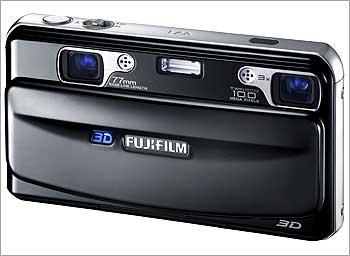Using some common features of a mobile phone, such as cameras, microphones and accelerometers, computer engineers from Duke University managed to transform the unique features of a particular space into a distinct fingerprint. Unlike standard GPS that show accuracy to 10 meters and are useless indoors, the latest invention from Duke's engineers is able to function indoors and can tell on which side of a wall the user is.
Engineers called their system
SurroundSense. It takes advantage of a built-in camera and microphone to be able to record sound, light and colors. Computer engineers also decided to use the accelerometer in order to record the movement patterns of the user. The gathered data is transmitted to a server that combines the collected information in one fingerprint. Each measurement cannot tell much, but when all three are joined, a unique fingerprint of the area is created.
Ionut Constandache, graduate student in computer science, presented the latest invention at the
15th International Conference on Mobile Computing and Networking that took place in
Beijing this
September (20th to be more specific).
A team of students from the Duke University carried out an experiment in which they wanted to test the accuracy of their latest invention, informs Eurekalert. They walked across Durham, N.C. with their mobile phones and gathered information in different types of businesses.
"We went to 51 different stores and found that SurroundSense achieved an average accuracy of about 87 percent when all of the sensing capabilities were used," said Constandache. It is worth mentioning that the more the application is used the more information it collects and the more precise the fingerprint becomes.
"Not only is the ambience different at different locations, but also can be different at different times at the same location," said Roy Choudhury, assistant professor of electrical and computer engineering at Duke University and senior member of the research team. SurroundSense gathers information at diverse time points, which means that you can distinguish a Starbucks store at the morning rush, the period of the day when there are a lot of customers, from the slower period in middle of the afternoon.
Although in order to gather information it is important that you hold the camera down so it faces the ground, engineers are looking forward to develop applications that would allow collecting data with the mobile phone in the pocket or handbag. In addition, battery life could provide problems, since having the application turned on 24/7 drains the battery faster.










